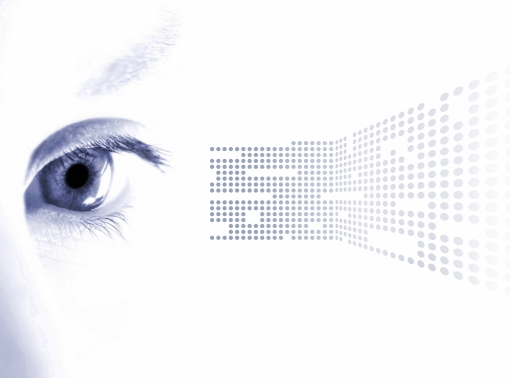COVER STORY SIDEBAR

Digital humanities thrive at Cornell
"Digital humanities" may be a hot new trend, but Cornell has been ahead of the crowd for a long time. As far back as 1998, students in the College of Arts and Sciences were turning in proto-websites on CD-ROMs as senior theses.
Today, students design interactive websites for class projects and faculty use computers in the classroom in innovative ways unthinkable even five years ago.
Byron Suber, theater, film and dance senior lecturer, teaches "Techno Soma Kinesics II: Repositioning the Performing Body in Space Through the Lenses of Digital Media." Students create sequences of sound and movement with lab computers, then transform the sequences into abstractions. "This forces students to work with formal principles of visual design and sound design that they might not be aware of," says Suber. Such interdisciplinary explorations would be impossible without Suber's creative use of the computer.
In the old B.C. days (before computer), students had to read in-class assignments aloud. But in "Critical Surfing," a freshman writing class first offered in 1997 by Timothy Murray, director of the Society for the Humanities, students post their writing on a blog Murray set up. Recent students have incorporated their experiences on Facebook and other social media sites into their blogging for the class.
"I'm not one that would say using technology in the classroom is necessarily going to be better than not using it, but it provides a different experience," says Murray.
But Cornell's digital innovations aren't limited to the classroom. Visiting assistant professor of art Renate Ferro founded the Tinker Factory to explore the intersections of art, humanities, computing and culture. "It's an interdisciplinary lab for creative research, a place to problem solve collaboratively in the area of digital media and digital humanities," she explains.
Since 2001 Cornell has been encouraging digital creativity through the Faculty Innovation in Teaching program, which has supported more than 150 projects. In one, German studies lecturer Grit Matthias created a platform where Cornell students can collaboratively create digital videos with students from universities abroad.
One of the world's leading digital art archives, the Rose Goldsen Archive of New Media Art, is housed at Cornell, under the sponsorship of Cornell Library's Division of Rare and Manuscript Collections. It's also part of the Digital Humanities initiative of the Society for the Humanities, which advances projects ranging from a two-year pilot faculty seminar with the University of Toronto Humanities Center to sponsorship of seven graduate HASTAC Fellows (Humanities Art Science Technology Advanced Collaboratory) whose blogging on the HASTAC website promotes humanities and social sciences research through shared approaches to technology.